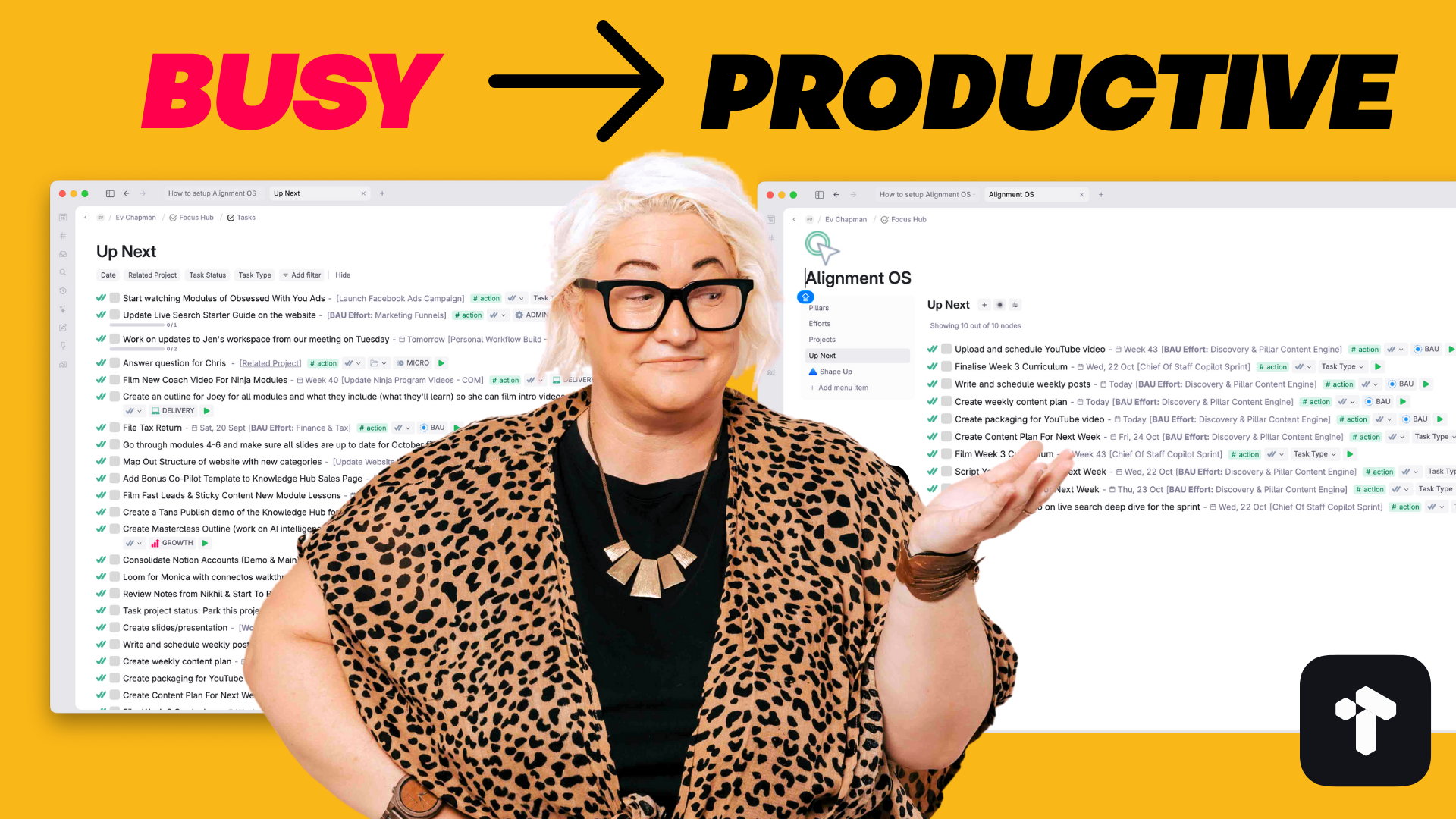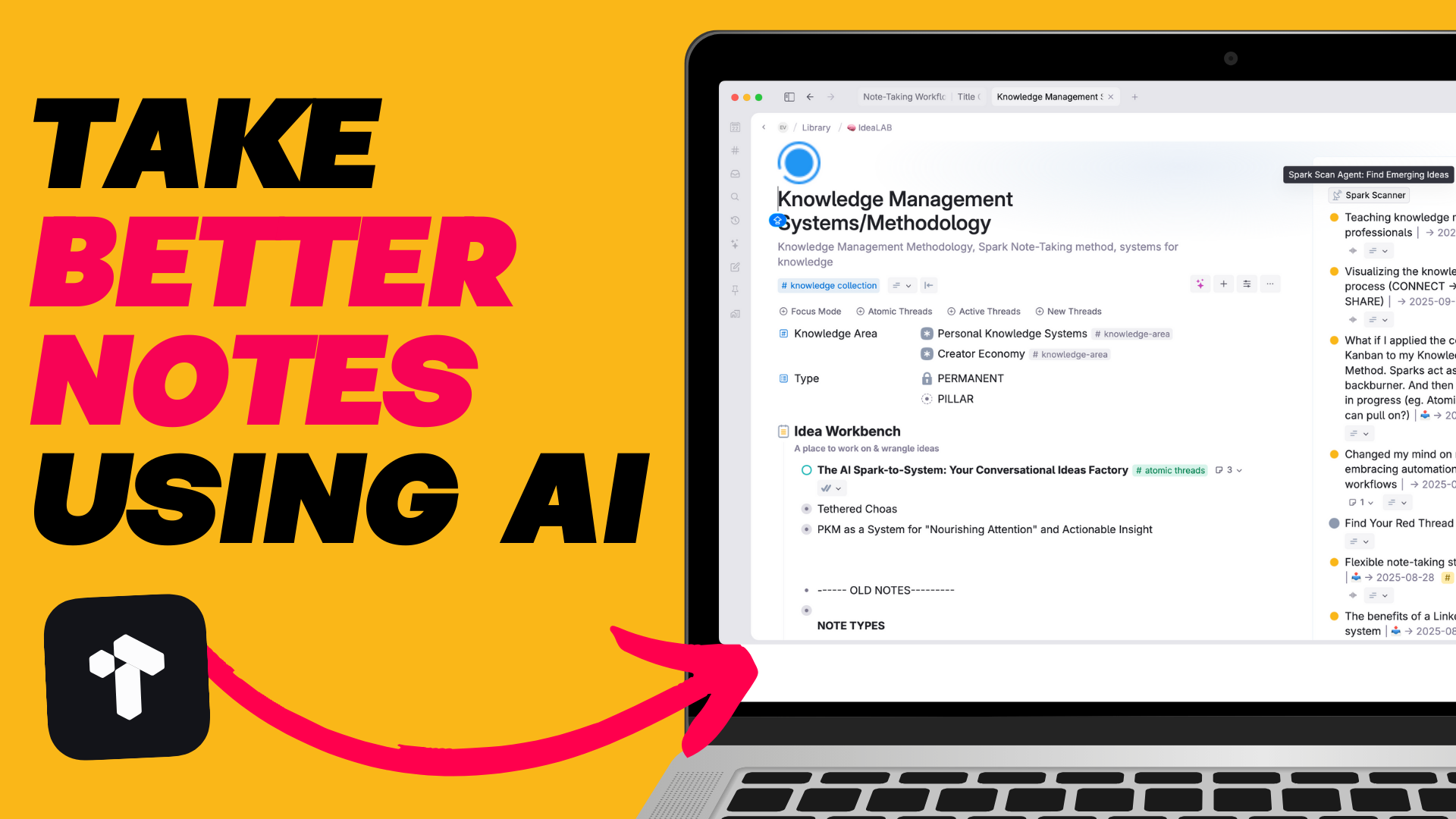
The hype is real when it comes to Tana… and it’s completely transformed my spark notes & writing system.
Marshal McLuhan famously said, “We shape our tools and thereafter our tools shape us.”
After years of trying to stay tool-agnostic when it comes to talking about note-taking, I’m willing to put it all on the line & say Tana has turbo-charged my note-taking & writing like no other tool I have used before.
I’ve been developing a note-taking habit for the last 3 years loosely based on the Zettelkasten system and I’ve used tools like Notion, Roam & Obsidian. But nothing compares to the turbo boost I’ve gotten by switching to Tana.
Everything else now feels like I was working in slow-motion compared to the speed, the quality and the depth I can get from working with my notes in Tana. And it doesn’t have anything to do with the speed of the tool itself.
I think it comes down to two fundamental Tana ideals:
These new levels of categorisation have opened up a whole new way of interacting with my notes that took my system from one-dimensional to multi-dimensional notes.
Organising by Cluster is my OG style of categorising & organising my notes. Cluster notes are big ideas that have atomic notes connected to them. Every Atomic note lives in a sequence inside a cluster note.
The key to making Clusters useful is in the sequence. Once a note is connected to the cluster, I scan through the other notes I already have connected and I find a place for it to fit in the sequence.
.png)
This means that many of my clusters form the basis for content outlines because I take the time to find where that note fits.
The problem with this type of organisation is that once the number of notes starts to grow in your library, you find yourself endlessly scrolling through cluster notes trying to find a particular note. I ended up feeling more like a secretary each writing session.
.png)
So even though clusters are still my main way of connecting ideas together, now they are not the ONLY way I can view my ideas & notes.
Ideas take time to develop. Some are new and need to be nurtured. Others are fully embedded into your psyche. And it was only quite recently that I added a new field to my notes called ‘Idea State’ which helps me visually see how developed an idea is.
And because my system is built around the concept of Sparks, so are my idea development stages:
✨ SPARK — This is a brand new note that I’ve dumped, but not developed in any way.
🔋 CHARGE — This state indicates that I’ve started to build my knowledge around this idea. I view it as ‘charging up’ These notes are still new though, so they need nurturing otherwise the spark will die out.
🔌 SURGE — A note or idea at the surge level is fairly built out. And at this stage, I consider it ready to plug in to my external network and share. I believe there is a balance between building in private & sharing in public. Both will make your ideas better
⚡️ ELECTRIFY — Although I think notes & ideas will always evolve, when it gets to this state it’s pretty much fully formed and has become an embedded part of my thinking.
.png)
And now with my states set, I get a new view: 💡 Idea Development and this becomes useful for a few different reasons:
I loosely categorise all my notes into three knowledge types: Actionable Knowledge, Titanium Knowledge & Mental Models.
This means if I’m working on an idea I can easily bring up all my mental models and see how I can apply one.
.png)
Or if I want to write an article that is more practical I can filter all my notes in a cluster by Actionable Knowledge notes & start to form an outline.
.png)
If you want to know what’s on my mind at any point in time, just look at my most recent notes. This is why I’ve come to talk about my personal knowledge library as my own personal zeitgeist.
It represents the ideas, beliefs & interests that I hold at any particular moment in time.
.png)
And so my Zeitgeist view shows me all the notes I’ve worked on within the given month. It’s a really interesting snapshot of everything I’ve been thinking & writing about within that period.
I often scan through at the end of the month and look for patterns that are emerging. Plus it keeps me honest. If I have a low note count, I know I haven’t been spending the time I should in my spark practice.
Finally, how could I talk about multi-dimensional notes in Tana without mentioning Tana AI for builders?
I really believe AI has the potential to take all the tediousness away from knowledge management so we can immerse ourselves even more in the ideas and less in the ‘management’ side of notes.
So as a first step, I built something called AI Smart Search into my Spark Notes library.
.png)
I give it a topic and it returns all the notes in my system that might be loosely connected. It’s still experimental and involves sending ALL my notes over to OpenAI. But I’ve found some interesting connections because of it that I wouldn’t have necessarily considered if I didn’t use it.
I’m convinced that my note-taking ecosystem will continue to grow as it has over the last 3 years and I’m excited to see how it continues to develop as Tana continues to add new and rich features.
If it’s possible, I’m even more excited than ever to wake up every morning to write, explore & build ideas.
If you want to sign up for early access to Tana you can get on the waitlist at their website.
.png)



